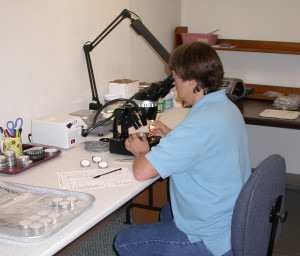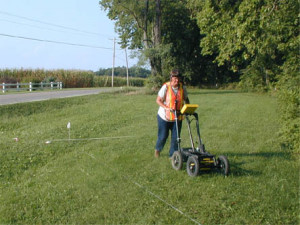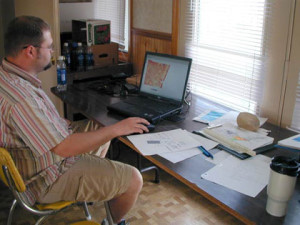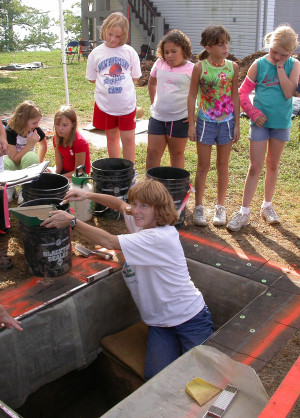 |
|
CURRENT
RESEARCH |
|
Learn
more about
Indiana Archaeology Month at Hovey Lake HERE! |
| Research
at the Hovey Lake site in 2003-2005 is supported by: a grant from
the Federal Highway Administration
(FHWA) under the Transportation Enhancement Program, Indiana
University, and private contributions. The Indiana
Department of Transportation (INDOT) administers the TE grant.
Also contributing to the research project are: Indiana Geological Survey, Indiana
University - Bloomington Department of Anthropology, the Indiana State Museum, University of Southern
Indiana, University of Evansville,
Indiana State University, and
community groups and volunteers. |
|
Last
Updated 9.6.2004
|
Future Research and Programs
| In the laboratory, excavated artifacts are being identified and cataloged. Charcoal from houses and the palisade and bastion features is being identified to species, to help the research team choose samples for radiocarbon dating. |
 |
|
Dr. Jocelyn Turner identifying carbonized plant
remains in flotation samples.
|
|
 |
 |
|
Volunteer Tom Ciskowski at work in the lab.
|
Research Assistant Susan Spencer cleans pottery
sherds from part of a large jar found above a house floor.
|
|
But major questions remain. If houses were built over the ruins of the early palisade wall, does this mean that hostilities ceased and villagers lived in a time of peace? Or, did the villagers build a new fortification wall further to the south, to protect the new houses and other parts of an expanding residential area of the village? |
 |
 |
|
| The one way to answer these questions -- peace vs. village expansions with re-fortification -- is to excavate south of the southern-most identified house. On state property, this part of the site is covered by a gravel driveway to the old State FHWA Building and by the yard south of the building. |
 |
 |
Additional GPR survey and soil cores may help identify
possible palisade features south of the driveway. An excavation
trench extending about 130 feet long may be needed.
|
 |
 |
|
Geologist Amzie Wenning (Indiana Geological
Survey) processing GPR survey data.
|
|
| In seeking funds for future excavations, the research team will also seek support for continuing the public education program, including the field trips for 4th-grade classes and the weekend Excavation Open House for the general public. |
 |
 |
|


